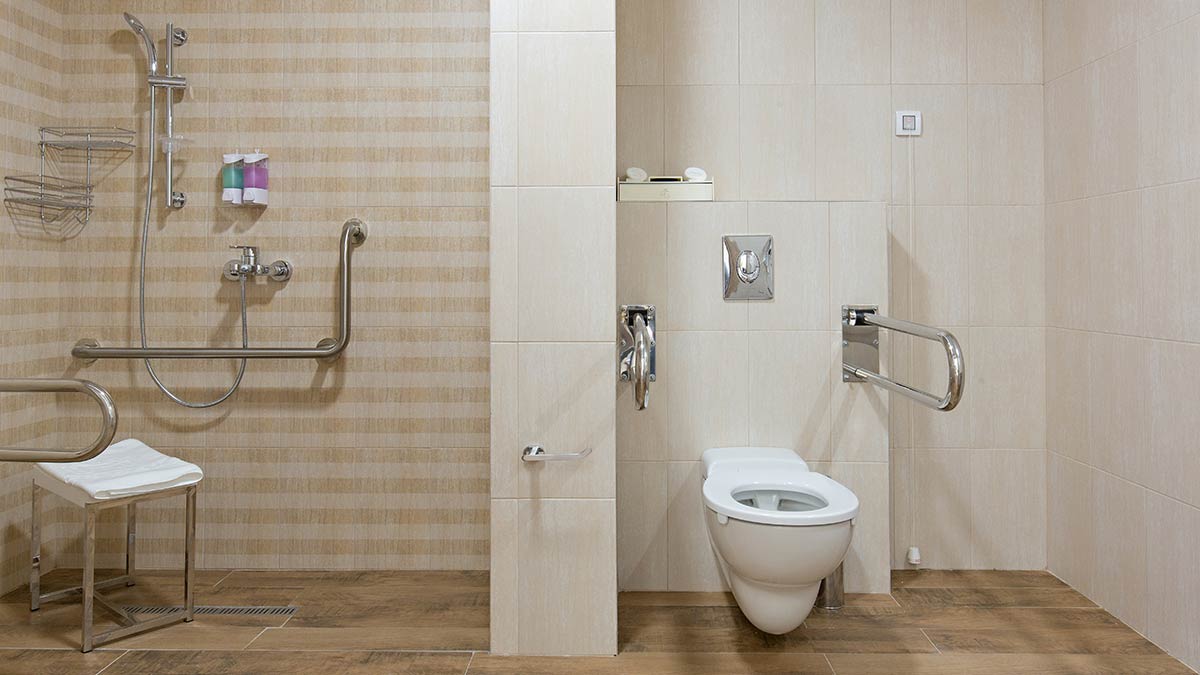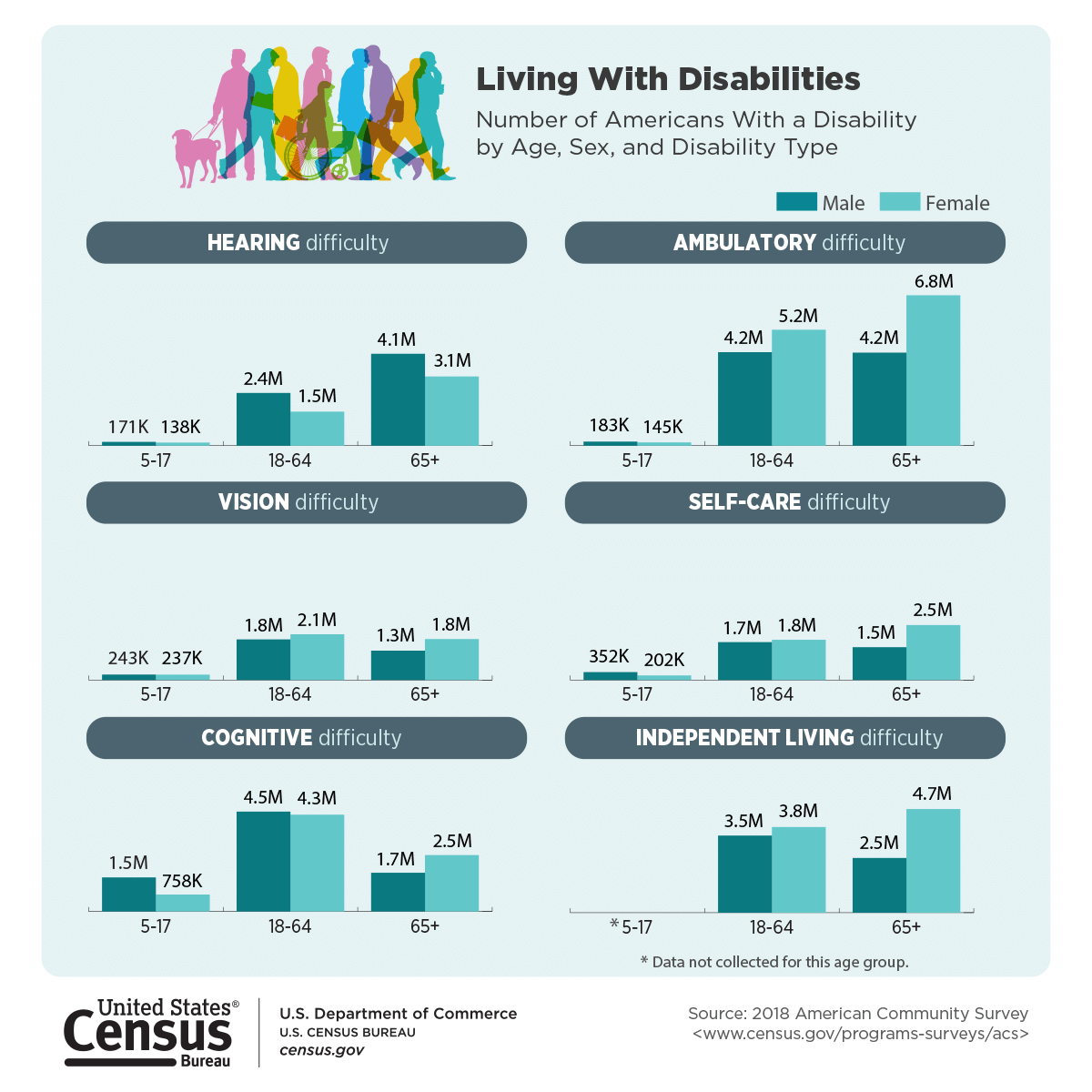
In general, codes require that 10 percent of a healthcare facility’s patient bathrooms meet ADA standards.
However, according to Healthcare Design Magazine, many architects and designers feel this percentage is too low and encourage their clients to provide as many ADA bathrooms as possible, even up to 100 percent compliance.
Michael Murphy, principal of Champlin Architecture, says that by designing all rooms to ADA standards—not just the required 10 percent—you avoid limiting your usable rooms and eliminate the constant shuffling of patients from one room to another. Not only does this reduce a significant strain on facility resources, but it also increases patient safety.

Prevalence of Americans with Disabilities
The most recent Annual Report on People with Disabilities in America estimates a current rate of 13.2 percent, or about 43 million people—a number which has been rising over the last few years. But when it comes to patient safety, even those without disabilities can benefit from certain aspects of an accessible room.
A large portion of the population regularly uses at least one prescription drug, which commonly come with side effects like dizziness/vertigo, visual impairment, and sedation. The Centers for Disease Control reports (PDF) that in 2015–2016, 45.8 percent of Americans had used at least one in the past 30 days, nearly doubling to 85 percent for those over the age of 60.
In addition, patients may face ambulatory challenges while recovering from surgery or undergoing treatment. It’s little wonder that inpatient hospital fall rates range from two to seven falls per 1,000 patient days* and bathrooms are the second most common location for falls.**
Some healthcare facilities are leading the way, striving to meet the needs of all patients and to offer not only healthy and safe spaces, but inclusive spaces, as well. Recent advances in plumbing design are helping those facilities meet their goals.
The universal design trend is leading the way in healthcare design, with the goal of creating a built space where all are welcome regardless of their age or ability. Universal design goes beyond the minimum accessibility requirements set by law.
ADA Bathroom Design
One of the most significant design challenges is wheelchair accessibility and maneuverability, especially in bathroom design. ADA-compliant toilets, urinals, sinks, showers, and valves make it easy to create a more inclusive space. Easy-to-use valves and properly installed grab bars benefit all patients.
While the ADA standards and building codes are an excellent place to start, there are other practical considerations healthcare facilities must take into account. One significant issue that should be factored into the design process is the challenge of accommodating the caregiver as well as the patient. Standard bathrooms often lack the extra space necessary for two people to maneuver safely. How easy is it for a caregiver to assist a patient in your facility’s bathrooms?
It can be difficult to conceptually envision a safe bathroom, which is why some designers recommend building mock ups. Jean Hansen, sustainable interiors manager at HDR Architecture, suggests mocking up critical areas and asking in experts and people with disabilities to try them out and provide feedback before finalizing your plans.
For additional insight, listen to what patients with disabilities have to say about their experiences. Healthcare Stories is a wonderful series of videos produced by the Disability Rights Education & Defense Fund in which patients discuss their often challenging healthcare visits—issues that you may have previously overlooked, having never been in their situation.
Explore Whitehall’s ADA-compliant products for solutions that complement your healthcare design, and please contact us if you have any questions or need more information.
ADA-Compliant Products Contact Us
*Halfon P, Eggli Y, Van Melle G, Vagnair A. Risk of falls for hospitalized patients: a predictive model based on routinely available data. J Clin Epidemiol. 2001 Dec; 54(12):1258-66. doi: 10.1016/s0895-4356(01)00406-1. PMID: 11750195.
**de Paiva MC, de Paiva SA, Berti HW, Campana AO. Caracterização das quedas de pacientes segundo notificação em boletins de eventos adversos [Characterization of patient falls according to the notification in adverse event reports]. Rev Esc Enferm USP. 2010 Mar; 44(1):134-8. Portuguese. doi: 10.1590/s0080-62342010000100019. PMID: 20394230.
